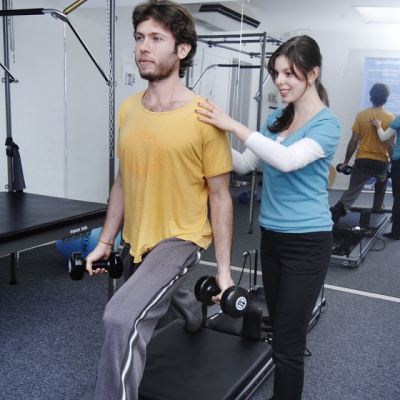To read the article as it appears in the Great Health Guide click here: https://issuu.com/great_health...
Alternatively read the text below:

Scoliosis is a common condition in which a person’s spine develops an unnatural, lateral curvature. The curve is usually ‘S’ or ‘C’ shaped and can affect the neck, upper and lower back as well as all three areas. It can have various physiological and cosmetic effects depending on the severity of the curves.
There are different types of scoliosis, some being idiopathic (where the cause is not known) and some having identifiable causes.
Types of scoliosis include:
- Infantile idiopathic scoliosis – develops when the child is younger than two years old.
- Juvenile idiopathic scoliosis – develops between ages 2-10 years.
- Adolescent idiopathic scoliosis – develops during adolescence. This presentation is much more common in girls than boys.
- Others – Congenital, neuromuscular and paralytic scoliosis.
Adolescent scoliosis is the most common type of scoliosis seen. There is usually a family history of scoliosis but at present, there are no definite rules about inheritance of scoliosis. The curve tends to develop the most during the adolescent growth spurts, this being around 11-13 years of age for girls and 13-15 years for boys.
Common causes of scoliosis progression include the following:
- Pregnancy
- Incorrect and repetitive postures (e.g. during breastfeeding/lifting the baby)
- Incorrect and repetitive postures at work
- Carrying heavy bags (this is a particular risk factor for school students)
An individual suffering from scoliosis will likely have a noticeable muscle imbalance when comparing one side to another – this is especially true for areas surrounding the spine, such as the pelvis, lower and upper back, shoulders and neck. Typically, scoliosis is associated with some level of back pain and discomfort, however this will vary between individuals. It is also common to experience a restriction in movement, particularly rotation (turning the body from side to side).
While scoliosis cannot be treated it is often possible, with the right management, to slow down and sometimes even stop its’ progression. In most cases it is possible to use conservative treatments. However, in some cases surgery is unavoidable. This will depend on the severity of the curvature. In some cases, adolescents will be advised to wear a brace during the period of fast growth of the individual.
The first step is to have a thorough assessment to determine whether scoliosis is present and if so, how severe it is. X-Rays are generally used for this purpose. It is important to bear in mind, though, that what we see on an X-Ray and the way some individuals present, can be quite different. Often the X-Ray will look worse when a person has very good posture; the opposite can also apply where an individual looks worse cosmetically than on the X-Ray.
Some of the most effective conservative treatment methods for scoliosis are:
- Clinical Pilates
- Electrotherapy
- General physiotherapy (including soft tissue massage and mobilisations)
- Specific home exercises
- Schroth method which includes a proprietary corrective breathing technique
A physiotherapist will typically perform a thorough full body diagnostic assessment before beginning a Clinical Pilates program, evaluating areas of weakness which need to be focused on. From here, exercises are gradually introduced, with a high value placed on proper technique and a good understanding of which muscles are being targeted. Clinical Pilates also incorporates many exercises to improve core muscle control, which in turn aids spinal stabilisation and improved posture. It is important to use Real Time Ultrasound to assess the strength and control of the core muscles. This way both the physiotherapist and the patient will be able to see the muscles working correctly.
There is plenty of evidence which shows that exercise and movement are a great way to prevent and manage pain. As exercise programs are intended to be extremely specific to the individual, it doesn’t matter what your fitness level is. Programs usually commence with an introduction to the equipment, outline of basic exercises and goal-setting so that there is a clear plan in place. From there, progressions can be gradually made, until the point where exercise is simply a form of maintenance for a healthy, mobile body, rather than a treatment method.
In some cases, however, exercise is not enough and other therapeutic methods are required to manage pain and discomfort associated with scoliosis. In these cases, electrotherapy and general physiotherapy are very effective. Electrotherapy treatment methods include interferential, ultrasound, SCENAR therapy and drug phoresis. As soon as the symptoms are under control the person should resume their exercise program as this is the best form of long term therapy for scoliosis.

